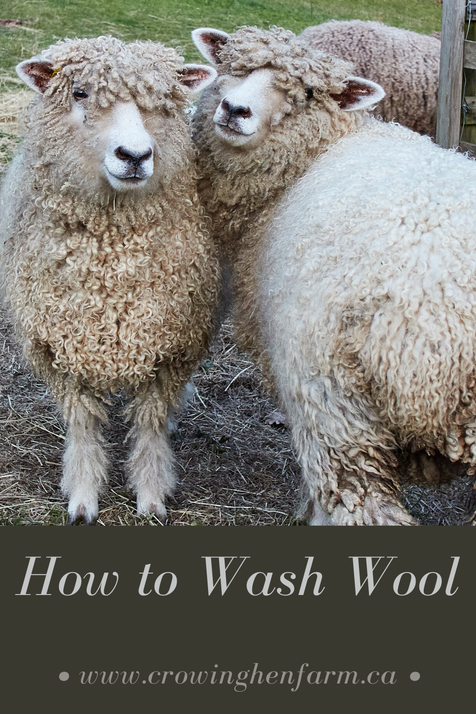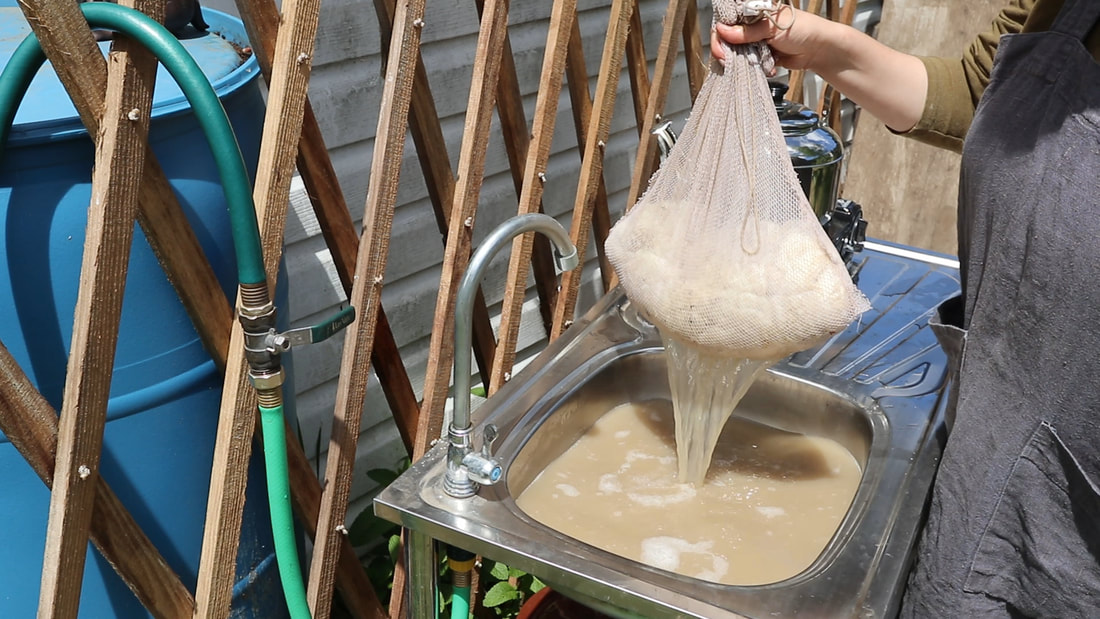|
16/6/2020 How to wash wool!
Click "read more" on the right to ... To wash wool, all you need is...
Here's what you do to wash wool.
Why Orvus paste? I first learned about Orvus paste at the fall fair. People were using it to wash lambs before they go before the judges. They said it was very gentle and since I was having skin problems from using dish detergent on my wool, I decided to try it. It worked a treat for cleaning wool, and I needed hardly any to clean an entire fleece! Not only does it not bother my skin, but it is also biodegradable, so it works wonders on my garden. What's this bit about easy rinsing? Soap and detergent are really great at breaking up grease and getting dirt away from the fibre, but cleaning agents leave a residue on the fibre. This is made worse with things like dish detergent that have additives to make it smell nice and be kind on your skin. It can often take more effort and water to rinse off the soap and detergent residue than to get rid of the lanolin and grime. Use as little as possible and avoid any that leave a strong scent on the wool after it's washed. The residue can make the wool tacky over time and worse, if you have sensitive skin like mine, it can bother the spinner or the wearer of the finished sweater. That's enough to get you started. But what if you have A LOT of wool to wash? Washing a lot of woolAdmittedly, I seldom wash wool in the garden anymore, except in drought when I can use the waste water on the plants. The sink is just too small, and the kettle takes too long to boil. But when I do, I usually re-use the rinse water. After the first rinse, I add a bit of detergent and more hot water, to use it as the first wash for the next batch of wool.
Inside the basement, I have a dedicated top-loading washing machine just for washing wool. I make sure the hot water tank is turned up to the max, and use just tap water to fill the washing machine. While it's filling up, I place the wool in net bags and put the Orvus paste in the water. Once the machine is full, I turn it off so it won't agitate (felt) the wool, and gently press the fibre into the soapy water. I leave it to soak, then lift the wool out of the washing machine, drain it, fill it, rinse, repeat until the water is clear. At the very end, I wuzz (sometimes spelt wuz) the wool. Wuzzing is a spinning motion which the spin cycle of the washing machine is happy to do for me. To wuzz, we place the wool in a net bag and swing it overhead like a lasso until the water stops dripping off the wool. It's a lot of fun, but I didn't want to get the camera wet, so I omitted it from the film. Thankfully, the washing machine spin cycle does this for me with less arm ache.
Maria
17/6/2020 21:11:59
Beautiful video, and your sheep are gorgeous! 😍 I love your approach to washing wool by starting with a cuppa. 😁 19/6/2020 10:01:05
I want to felt the wool, how would this be coordinated with the washing?
David
21/6/2020 14:38:23
This was very helpful. I was hoping to find something like this before washing/carding and spinning our wool. We have 4 sheep and 6 llamas. Can I do the same thing when we shear the llamas? Comments are closed.
|
CategoriesAll Airwell Angora Animal Fibre Boring Community Cotton Dryland Farming Dye Etsy Shop Experiments Fibre Prep Finance Flax Frugal Household Management Indigo Linen Local Cloth Mediterranean Climate Natural Dye Permaculture Plant Fibre Sewing Silk Tutorial Urban Fibre Vintage Wildcrafting Archives
February 2022
|
|
Created by Tracy Wandling of One Wing Freelance Graphic Design
|


 RSS Feed
RSS Feed
